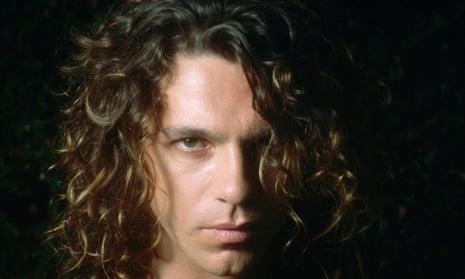Some fictional films are captured with such a realistic aesthetic, reflecting a particular time and place so accurately that it’s almost like watching a documentary.
Richard Lowenstein’s scuzzy 1986 classic Dogs in Space primarily concerns two kinds of nostalgia. One is a specific time and setting – terrace house living in Melbourne at the end of the 70s, during the height of the post-punk “little bands” scene – and the other something much more universal: the follies and hedonism of youth, in particular 20-somethings flopping about in shared accommodation.
A decade and a half later, Lowenstein would release another memorable film set in a shared house, He Died With a Felafel in His Hand, but it was Dogs in Space that nailed the grimy stained carpet aesthetic – the look and feel of a film dipped in bong water and left in the sun to dry.
That might not sound like the greatest of accolades, but Lowenstein’s ode to a bygone, woebegone, couch-crashing era is a stunning piece of work, captured with an in-the-moment atmosphere that leaves most social realist films for dead.
Dogs in Space is also a historical document for reasons other than its set and setting. It features one of the few film performances of INXS front man Michael Hutchence, who headlines the cast as Sam, leader of a band from which the film takes its name. They mostly play in the central shared house setting, nowhere big or special, and certainly nowhere without booze splattered on the floor.
The first time we see the house is a slow zoom in accompanied with music from Melbourne indie radio station Triple R playing in the background and a girl sitting on the front steps looking anxious. The terrace is down a narrow one way street, part of a cosmopolitan network of alleyways and dimly lit bars with filthy toilets and no-name bands – Melbourne through and through.
Inside, the house is an illustrated excursion down university-living lane, splotches of character burnt into the fabric of it. There are cracks in the wall, stains on the couch, graffiti and drawings on virtually everything, dangling cords and any number of thingamybobs strewn around, detritus from a thousand parties and late night cook-ups.
Lowenstein captures this setting with a rock-hard realism you can’t fake (he has described the film as partly autobiographical), but the low-fi look is deceptive. Dogs in Space was produced with a budget of over $2m (backed by private investors such as The Chant of Jimmie Blacksmith director Fred Schepisi) and featured technical innovations such as a double crane system devised to enable the camera to move vertically in a straight line, reportedly the first of its kind to be used in Australia.
“We tried to make it look like a punk version of a Spielberg film, with shafts of light and widescreen Dolby stereo sound. I can’t believe we got away with it,” Lowenstein told The Age in a 2009 interview. They did, but it’s not as if audiences lined around the block to see the finished result. Dogs in Space fizzled at the box office, generating around $116,000 in its first four weeks of release. One of the titles it was up against was another Australian film with, shall we say, slightly broader appeal: director Peter Faiman’s Crocodile Dundee.
The most interesting aspect of Dogs in Space is also its most challenging, at least as far as dramatic structure is concerned. The vast majority of the film has virtually no plot, until a finger-waving ending finally hammers home the dangers of heroin.
Our introduction to Michael Hutchence is a scene in which he greets the young girl waiting outside, blundering up to her with the fickle attentiveness of a midnight drunk (it’s the middle of the day). Hutchence, who was one of the film’s major selling points, makes a strange and erratic presence, compelling to watch and unpredictable despite his permanently drugged-out demeanour.
The band sing Rowland S Howard’s classic song Shivers, wrapping their mouths around those sad words: “I’ve been contemplating suicide but it really doesn’t seem my style.”
Despairingly, that turned out not quite true in Hutchence’s case. The INXS star took his own life in a Sydney hotel room little more than a decade after the film’s release. His death gives the Dogs in Space’s macabre resolution even more potency, feeding into its most powerful messages: that every party comes to an end and all good times become memories.

Comments (…)
Sign in or create your Guardian account to join the discussion